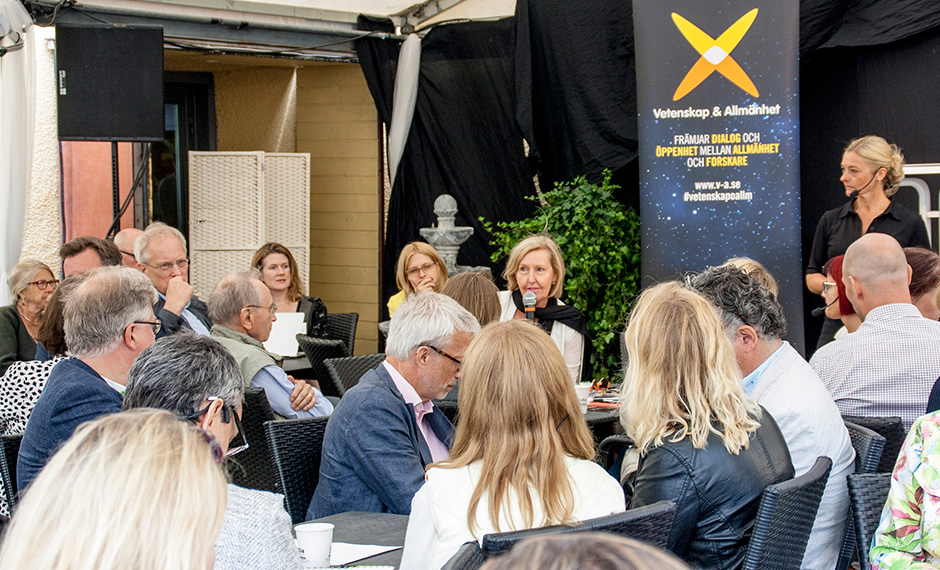Public & Science Sweden wants to promote dialogue in new formats about various research-related themes that engage people.

In a researcher dialogue, researchers are invited to discuss a topic together with other researchers with ongoing input from the audience in the form of questions and comments and the help of a moderator. The basic idea is that the dialogues should be determined by the interests, questions and concerns of the public, rather than what the researchers want to convey.
We regularly use formats, such as researcher dialogues and Science Cafés, in our public engagement activities.
Some tips for running a successful researcher dialogue are:
- Themes
Themes for discussion should relate to people’s everyday lives or, in other ways, be of interest to the general public. Sweeping themes such as “Nanotechnology’s risks” should be avoided. Instead questions like the ones below should be formulated:
– What determines how we choose a partner?
– Why does becoming wealthy make few people happy?
– Can nanoparticles in skin lotions be dangerous?
- Research selection
The researchers must be sensitive to and interested in the questions and ideas of the participants. The researchers’ ability to talk in a way that is easy to understand and sparks people’s interest is just as important as their expertise in their field.
- Moderators
To facilitate the dialogue it is important to have moderators who are able to structure the conversation, encourage people to contribute and, when necessary, pose questions, clarify and round off the discussion.
- Dialogue
The purpose is to achieve a genuine dialogue, not a lecture followed by a Q&A session. It is therefore important to clearly explain the process right from the start. It is usually a good idea for researchers to begin by talking for a few minutes, ask the public a question or two and provide concrete examples or make provocative statements. The participants are then invited to actively participate in the dialogue.
- Duration
The researcher dialogues should not continue to the point where the topic is exhausted. Ideally, the conversation should be concluded after the dialogue has reached a climax.
